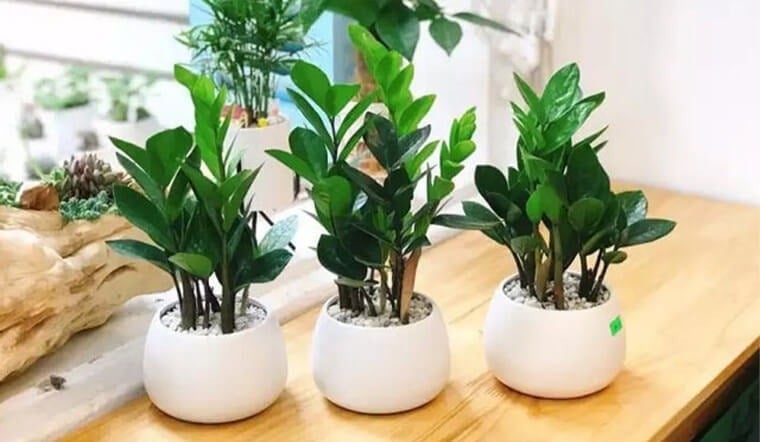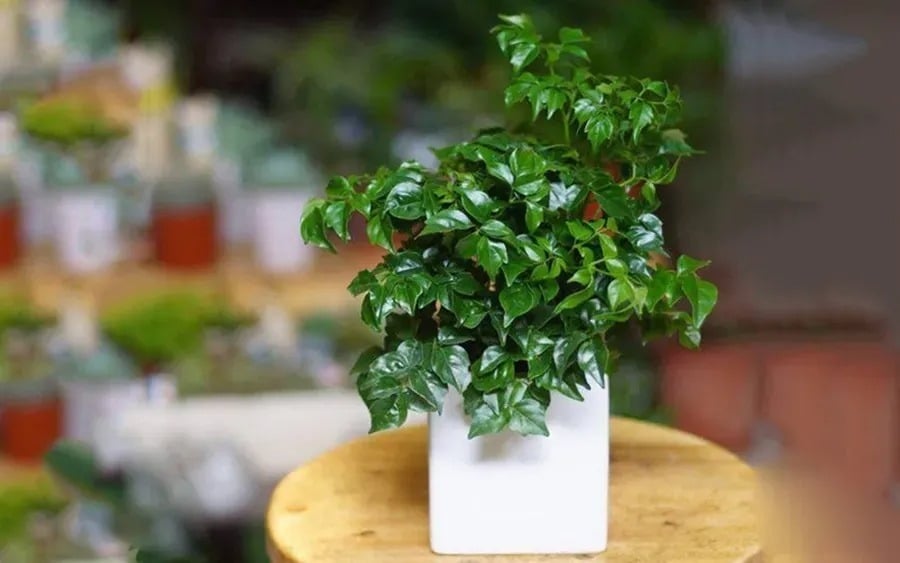The first type of plant is the Money Tree
The Money Tree has long been considered a symbol of prosperity. As its name suggests, this plant is favored by many entrepreneurs as it represents success in business and abundant wealth.
Notably, the leaves of the Money Tree resemble an open hand, spreading outwards from the center and facing both sides, symbolizing the accumulation of fortune from all directions. Thus, the Money Tree is always seen as an icon of affluence and good luck.

The Money Tree, a longstanding symbol of prosperity
Caring for the Money Tree is simple. You can place it in your living room, bedroom, or even in large shopping malls. The Money Tree thrives in a humid environment and will grow strong with temperatures maintained above 15 degrees Celsius, even without meticulous care.
If your indoor Money Tree isn’t thriving, simply changing the soil can improve its condition. If you have the time, frequently mist the leaves to keep the plant vibrant and healthy.
The second type is the Happiness Tree
The Happiness Tree carries a different significance from the Money Tree, symbolizing harmony and happiness within the family. Often placed in the living room or bedroom, the Happiness Tree is favored by families who wish to preserve enduring happiness and attract good luck.
The Happiness Tree is also easy to care for. It grows tall, and if you have the time, you can prune and shape it to enhance its appearance.

The Happiness Tree symbolizes family harmony and happiness.
With its beautiful shape and lush green leaves, the Happiness Tree not only purifies the air but also brings joy and happiness to the family, especially when placed in a well-lit area.
The third type is the Pipe Cactus
The Pipe Cactus is a new variety gaining popularity in the market. Despite its name, it is actually a type of cactus. Its exterior resembles a small tree with branches similar to those of a real tree, particularly looking like a miniature version of a typical pine tree.
The Pipe Cactus embodies the traditional features of a succulent with round leaves that feel pleasant to the touch. When placed in the living room, it exudes a vibrant energy and symbolizes prosperity, attracting wealth from all directions. The Pipe Cactus, with its name implying “money-sucking,” is beloved for its ability to attract fortune and enhance the family’s financial luck.
People of all ages enjoy displaying this plant in their living rooms as it represents luck and happiness. Upon closer inspection, you’ll notice grooves on the leaves that point inward, resembling tiny straws. These grooves symbolize the absorption of good fortune and blessings into the home. By placing the plant in your living room, you’re inviting wealth and happiness from all directions into your family’s life.
Additionally, the Pipe Cactus is easy to grow. Just ensure it receives adequate humidity and sunlight. With sufficient daylight, you can move the plant from the living room to the balcony to benefit from more sunlight, promoting healthy growth and photosynthesis. The more sun exposure it gets, the redder, more beautiful, and vibrant its leaves become, increasing its value.
The fourth type is the Cinnamon Tree
Many families prefer growing cinnamon trees in their yards, symbolizing the “display of cinnamon flowers before others.” The cinnamon tree not only has a distinctive fragrance but also signifies luck, wealth, and happiness.
Placing the cinnamon tree in the living room is also a viable option. However, during its flowering period, it’s advisable to move it to the balcony due to the potent scent of its blossoms. Caring for the cinnamon tree is not complicated; just ensure it receives sufficient sunlight, especially during winter when it requires more careful attention.
Attract Wealth and Prosperity: The Power of the Chinese Money Plant’s Placement
According to Feng Shui principles, the money plant, also known as the “prayer plant,” thrives when placed in a specific area of the home, bringing prosperity and good fortune to its residents. This optimal location is said to be in the southeast corner of the house, which is believed to be the wealth corner, attracting abundance and positive energy.



































